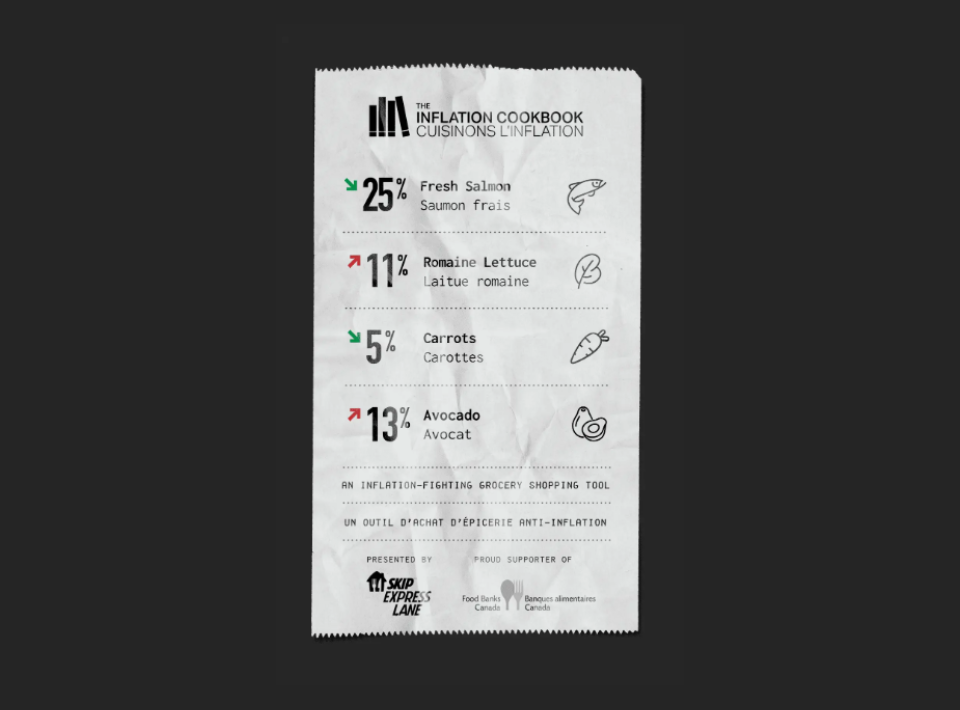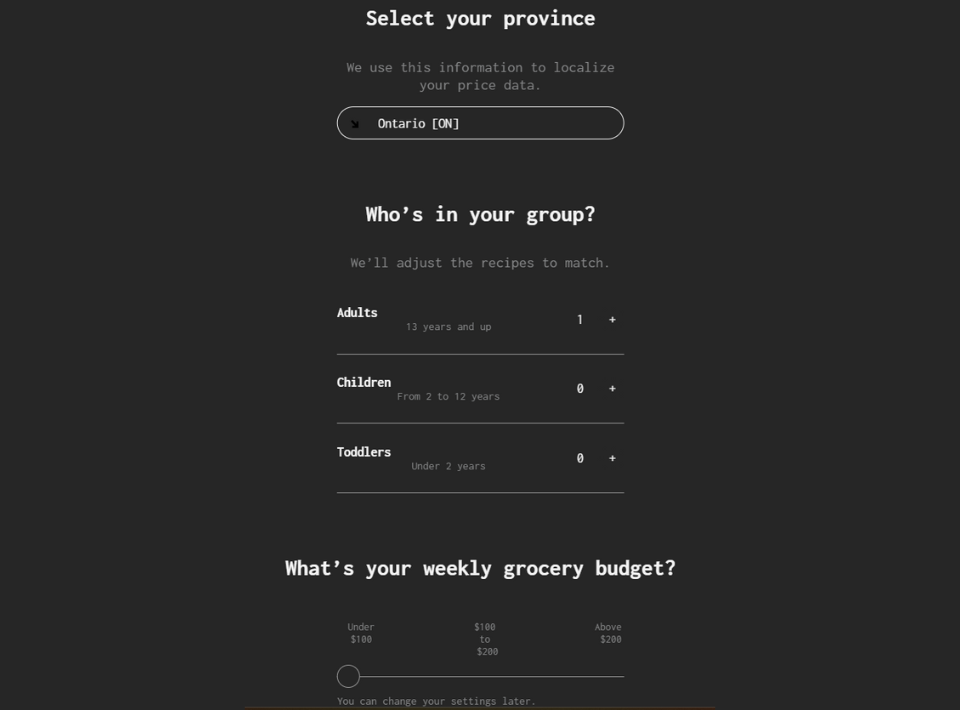This AI Marketing case study example features an inflation-fighting grocery shopping tool powered by AI that saves Canadians money. Desirable globally.
Inflation has become a widespread issue since COVID-19 and has impacted economies on a global scale.
Skip Express Lane is a Canadian groceries and household essentials delivery app that created the Inflation Cookbook, a website providing users with a weekly list of the top 10 grocery items whose prices have increased or decreased based on their location.

Additionally, the website offers recipe ideas for each of those ingredients created by in-house nutritionists and chefs with the help of artificial intelligence.
According to a recent Ipsus survey, global consumer concerns about inflation have increased by 32% in the past 2 years.
And the Inflation Cookbook has not only addressed a common problem but has also provided consumers with valuable resources to make informed decisions.
In this article, you will learn the insights behind the success of this AI marketing strategy.
A Data-Driven Approach That Delivers Value [and Groceries]
Skip Express Lane knows how to leverage their data to provide value to their customers.
They have a system that allows them to compare the prices of over 400 essential fresh foods and ingredients across major retailers located in over 80 regions across Canada.
In this way, they are able to identify significant price fluctuations for each item, whether it has increased or decreased compared to the previous week.
Using their historical data, they are able to track the prices of these items over time and provide customers with a list of low-priced ingredients.
Additionally, they are able to tailor their offerings based on location, providing a customized list of items for each customer that takes into account price variations across different regions.
Thanks to its data analysis capabilities and the power of AI Marketing, this company is able to provide its customers with an optimal shopping experience.
Listening, Empowering, and Feeding Customers
One thing that sets this company apart is its focus on listening to its customers’ needs.
With inflation on everyone’s minds, they’ve made it their main priority to deliver affordable food.
But they also go the extra mile by helping customers make smart purchasing decisions through their website.
This not only adds value to the customer experience but also builds trust.
The Inflation Cookbook’s website is designed to be realistic and easy to understand, with a clear explanation on the first page of how the tool works:

The branding is also cleverly done, using economic terms in combination with grocery shopping: “Take inflation out of your cart.”
Overall, the proposal is straightforward and enticing.
Customers will have access to the lowest-priced items and recipes from professional chefs using those ingredients.
Personalization at Every Step: The Secret Sauce
The Inflation Cookbook excels at personalization by taking a number of important steps to tailor their service to individual customers.
They begin by asking customers for their location to localize their price data.
They also ask for the number of people in the customer’s household, which allows them to adjust the recipes to suit their needs.
Finally, the company asks for the customer’s weekly budget, which enables them to provide more accurate recipes that are tailored to their financial situation.

Personalization is a critical aspect of AI marketing, as it can significantly improve customer value by offering customized solutions and results.
A brand that is more personalized is likely to be perceived as more valuable by customers, which can lead to higher revenue for the business and increased customer loyalty.
The Ultimate Customer-Centric Recipe
The Inflation Cookbook is a solution that focuses on the customer’s needs and operates in a circular model.
It offers a variety of benefits that go beyond just providing a list of the top 10 items that have experienced a price drop or increase.
Apart from that, the Inflation Cookbook has an option for customers to place their orders directly through the grocery delivery app, simplifying the purchasing process for them.

Moreover, the Inflation Cookbook goes a step further by offering customers access to weekly recipes that incorporate ingredients that have experienced a decrease in price.
This is made possible with the use of AI Marketing, allowing for a seamless experience for the customers while helping them save money on groceries.
Creating a Virtuous Cycle: From Shopping to Cooking
The Skip Express Lane delivery app and The Inflation Cookbook work together to create a virtuous cycle for customers.
First, customers use Skip Express Lane to order their groceries.
They can then use The Inflation Cookbook, which is powered by the delivery app, to make informed choices about what to buy.
Once they have made their selections, customers return to Skip Express Lane to purchase the items they found on the list.
When the groceries are delivered, the customers can refer back to The Inflation Cookbook for recipe ideas to cook with their new ingredients.
This cycle not only helps customers make smart purchasing decisions but also increases the value of the platform by encouraging customers to stay engaged for a longer period of time, ultimately improving customer retention.
So, What Did We Learn From This AI Marketing Case Study?
- Addressing common problems and providing valuable resources builds trust and adds value to the customer experience.
- Leveraging data analysis capabilities and AI marketing can optimize the shopping experience and deliver value to customers.
- Personalization is key in AI marketing, as it improves customer value, increases revenue, and fosters customer loyalty.
- Focus on listening to customers’ needs and delivering solutions.
- Clear and enticing branding can attract customers and make the proposition more appealing.
- Create a customer-centric solution that operates in a circular model, offering benefits beyond the primary service.
- Encourage a virtuous cycle by integrating different aspects of the customer journey and increasing customer engagement and retention.







